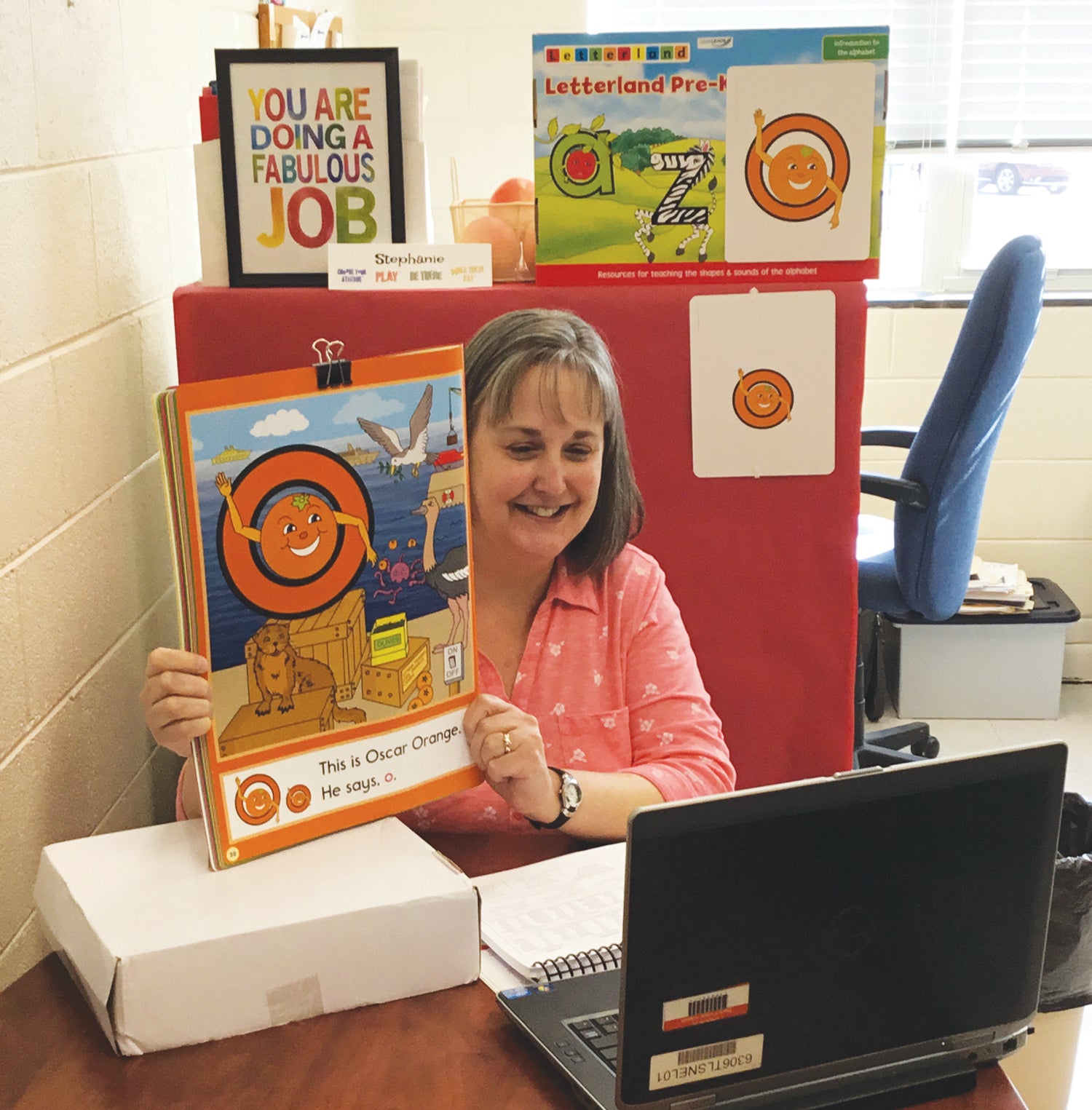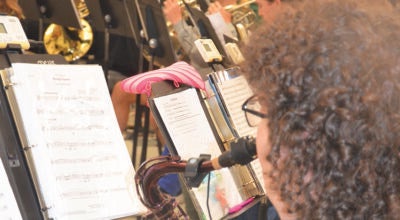Teacher training takes on a new look
Published 2:31 pm Tuesday, March 16, 2021

- Stephanie Nelson records an early learning video to support teachers and preschoolers during the pandemic.
|
Getting your Trinity Audio player ready...
|
By Jeanna Baxter White
Word Master Media Group
Once the camera is ready, Stephanie Nelson begins to record another learning video for Davie County’s preschool teachers and the families of children who are learning from home.
Nelson, Davie County’s preschool collaborative teacher, was hired with funds from DavieLEADS (Literacy Empowers All in Davie to Succeed), a five-year, $2.5 million grant initiative between Davie County Schools (DCS) and the Mebane Foundation to improve kindergarten readiness and to increase the percentage of students reading proficiently by the end of third grade.
Her role is to support preschool teachers in their understanding of readiness based on the North Carolina Foundations for Early Learning and Development and to provide coaching services and support to teachers as they master the curriculum and assessment tools provided by the grant.
Until last spring, those services were offered in person. When the pandemic forced schools to switch to virtual learning, Nelson began creating a series of early literacy videos so that she could assist with the transition. While most of the county’s preschool programs have returned to in-class instruction, only people providing direct student services are allowed to enter the classroom. Nelson’s face-to-face contact with teachers has been limited to short meetings in a director’s office during nap time or after school.
“It is important to have a collaborative teacher in the facility working weekly and monthly with those teachers answering questions and helping them fine-tune the use of resources throughout their classrooms in all aspects of their schedule,” said Peggy Nuckolls, director of preschool programs for Davie County Schools. “Despite having minimal access to classrooms, Stephanie has developed a way to continue to provide that support and modeling to make sure fidelity is maintained.”
Nelson explained the multiple ways the early learning videos are being used.
“Every program and teacher I work with has different needs so I wanted to create a resource that could be utilized in whatever way best fit the needs of the audience who would receive it.”
This resource can be:
• a model teaching tool that teachers can watch to prepare for their own instruction throughout the curriculum year;
• a family engagement and support resource teachers share with students’ families whether they are in class, learning virtually, or didn’t get to return to preschool but want support for how to instruct their children at home;
• a method to better align preschool curriculum with new Heggerty phonemic curriculum in kindergarten and first-grade classrooms;
• an at-home activity for teachers to share with students; and
• a way for Davie schools and LEADS to connect with preschool teachers and families of rising kindergarteners to send messages about kindergarten registration.
“We also wanted to be proactive,” she said. “If classrooms have to close again we will have this mechanism in place to continue Heggerty for NC Pre-K classrooms and Letterland county-wide.”
She records two 8-10 minute videos each week and has a library of 32. In each video, she teaches a Letterland phonics lesson, a Heggerty phonemic awareness lesson, and shares two enrichment activities connected to the letter being studied through Letterland such as a short Letterland character story or a simple cooking project.
“I try to make it simple for families. For example, for the letter “C” families could read Clever Cat’s Cocoa and then make their own cocoa.”
She introduced the letters in the order recommended by the Hill Learning Center based on research about how children learn to produce letter sounds. The letter “P” was first because it is considered the easiest. This order was also familiar to many of the teachers who have had Hill Center training and were already teaching the letters in the same way.
She submits the videos on Classtag, a free parent/teacher communication app, and then sends out three sets each week since preschool programs and families began using the resource at different times.
She shared the videos as a teaching tool with 10 DCS classroom teachers and 11 preschool teachers from private child care or faith-based preschool programs. In addition, 129 families from 11 classrooms in private child care or faith-based preschool programs were offered access to the videos. So far, 37 percent of the invited families have participated.
“Feedback from teachers has been wonderful,” Nelson said. “They really appreciate it. It not only gives them a heads up and more information about Letterland and Heggerty but they see me model instruction for Heggerty which has been helpful since most of the NC Pre-K teachers began using the program in December. I use Session One and Session Two from the Early Years Teacher Handbook to teach Letterland.
“Some teachers use that tool more than others so sometimes I pull out information they may not be as familiar with. I also use Letterland materials such as a big book that is more accessible to any preschool program, whereas the public school teachers and a couple of private programs are using a Smartboard and the Letterland version that is utilized with it.”
Mebane Foundation President Larry Colbourne appreciates her commitment and ingenuity.
“When we set out on these larger, more comprehensive partnerships one of the natural things that happens is high-quality teachers and administrators come up with innovative ideas to address problems,” he said.




